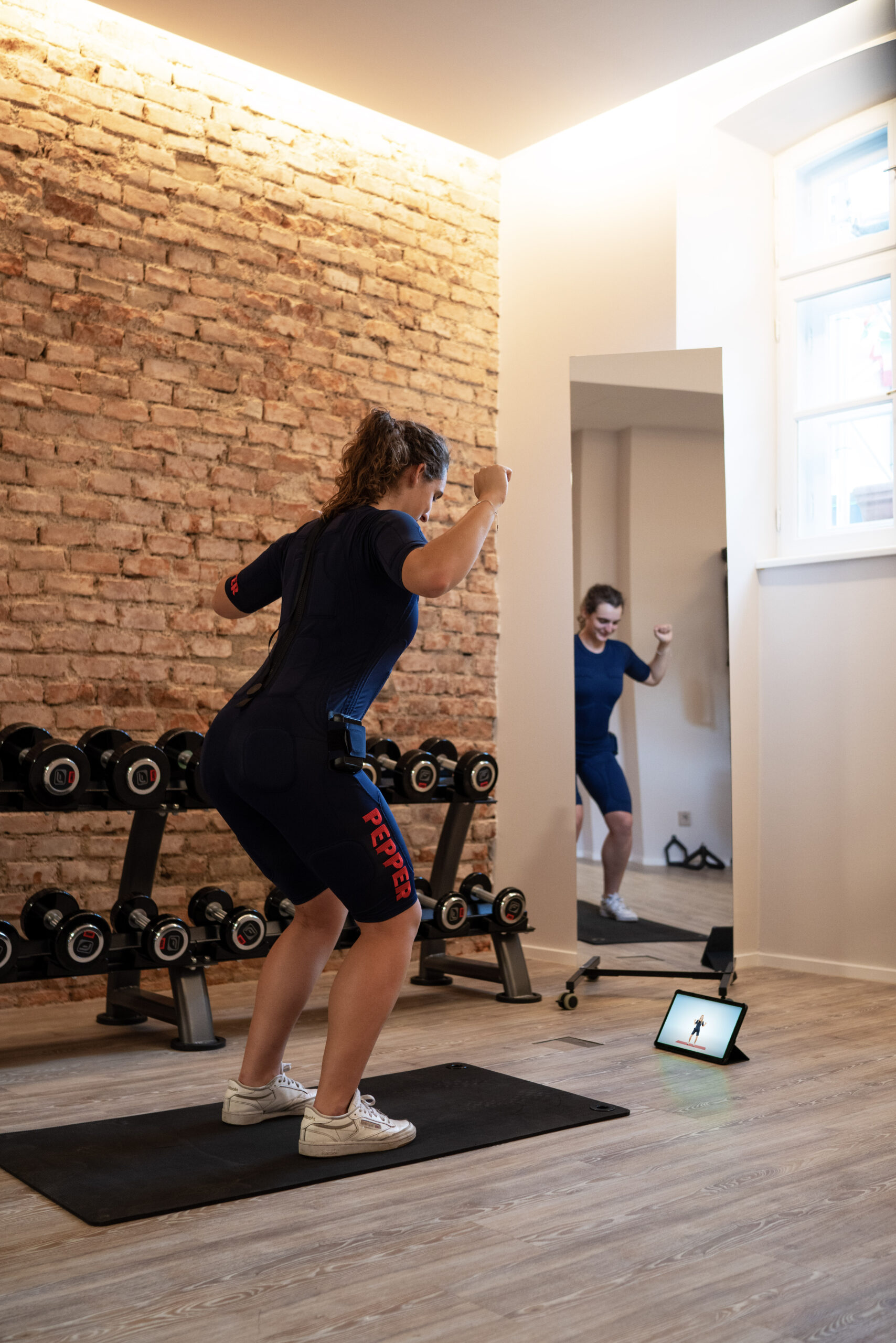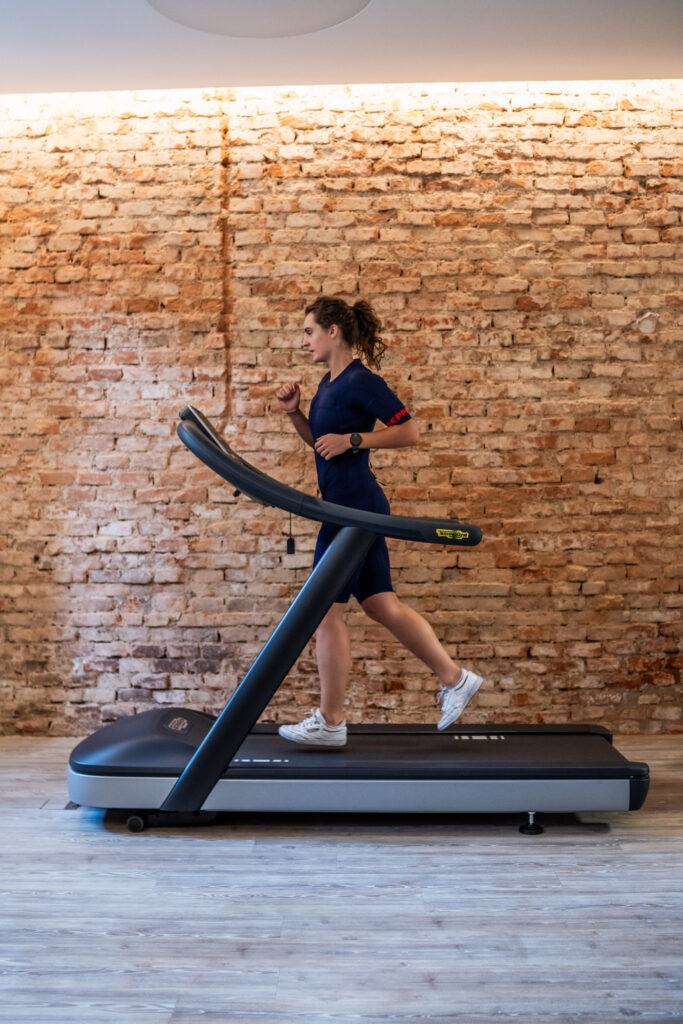Have you, or someone in your inner circle, ever suffered from an injury or any other form of muscle imbalance or even joint damage, etc.? Then you have probably been made familiar with the world of rehabilitation and physical therapy. Nonetheless, in this realm, innovation is key to helping patients recover faster and more effectively. One such innovation that has gained prominence recently is Electro Muscle Stimulation or EMS. This cutting-edge technology is proving to be a valuable tool in the hands of therapists and individuals seeking to regain their strength, mobility, and overall wellness.
Pro-Tip: if you are unaware of what electro-muscle stimulation is and how it works, read our blog here.
How EMS Aids Rehabilitation:
- Muscle Strengthening: Muscle atrophy is a common concern for individuals recovering from injuries or surgeries. EMS can help prevent and combat muscle loss by stimulating muscle fibres, especially when traditional strength training might be challenging or limited. This was further investigated by the study: The Use of Electrostimulation in Sport: A Comprehensive Review published in the European Journal of Sport Science. This study highlights how EMS can improve muscle strength, endurance, and neuromuscular coordination, making it valuable for both athletes and those recovering from injuries.
- Pain Management: EMS can alleviate pain and discomfort by increasing blood circulation and promoting the release of endorphins, which serve as natural painkillers. This is particularly valuable for individuals dealing with chronic pain.
- Improved Range of Motion: EMS can enhance joint flexibility and range of motion, crucial for patients recovering from injuries or surgeries that have limited their mobility.
- Faster Recovery: By accelerating muscle recovery and reducing inflammation, EMS training can help patients recover more quickly, allowing them to return to their daily activities sooner.
- Neuromuscular Benefits: EMS aids in retraining the neuromuscular system, helping individuals regain control and coordination of their muscles, which may have been compromised due to injury or surgery. This was further verified by the Journal of Orthopaedic & Sports Physical Therapy which explored the role of neuromuscular electrical stimulation (NMES), a form of EMS, in muscle recovery after injury. It demonstrates how NMES can prevent muscle atrophy and promote muscle reconditioning during rehabilitation.
How Physical Therapists Use EMS
Physical therapists often incorporate EMS into their treatment plans, customizing programs to meet the specific needs of each patient. EMS can be applied through wearable devices like EMS vests or pads placed directly on the affected area. Therapists can adjust the intensity and frequency of the electrical impulses, ensuring a safe and effective rehabilitation process.
Conclusion
Electro Muscle Stimulation is revolutionizing the field of rehabilitation and physical therapy. Its ability to target and activate specific muscle groups makes it a versatile tool for therapists and a source of hope for individuals on their journey to recovery. As technology continues to advance, we can expect EMS to play an even more prominent role in improving the lives of those in need of rehabilitation and physical therapy.
Sources:
Filipovic, Andre; Kleinöder, Heinz; Dörmann, Ulrike; Mester, Joachim. Electromyostimulation—A Systematic Review of the Effects of Different Electromyostimulation Methods on Selected Strength Parameters in Trained and Elite Athletes. Journal of Strength and Conditioning Research 26(9):p 2600-2614, September 2012. | DOI: 10.1519/JSC.0b013e31823f2cd1
From the 1Orthopaedic Research Institute, Bournemouth University, Bournemouth, UK, 2The Department of Biomedical Engineering, Saveetha Engineering College, Thandalam, Chennai, India, 3Department of Anaesthetics, University Hospital Southampton NHS Foundation Trust, Southampton, 4National Clinical FES Centre, Salisbury NHS Foundation Trust, Salisbury, 5Faculty of Health and Social Science, Bournemouth University, Bournemouth, UK, 6University of Maryland, School of Medicine, Department of Physical Therapy and Rehabilitation Science, Baltimore, Maryland, MD, USA, 7School of Sport and Exercise Science, Liverpool John Moores University, Liverpool, 8Physiotherapy Department, University Hospitals Dorset NHS Foundation Trust, Bournemouth, and 9Department of Haematology, Hampshire Hospitals NHS Foundation Trust, Basingstoke, UK.
Nussbaum, Ethne L et al. “Neuromuscular Electrical Stimulation for Treatment of Muscle Impairment: Critical Review and Recommendations for Clinical Practice.” Physiotherapy Canada. Physiotherapie Canada vol. 69,5 (2017): 1-76. doi:10.3138/ptc.2015-88



